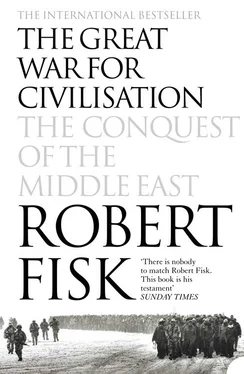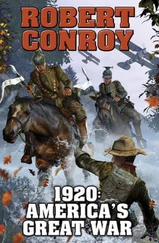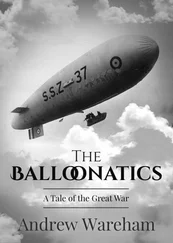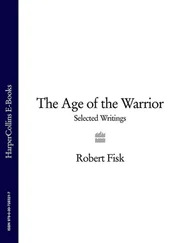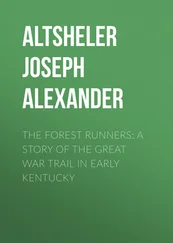Ariana had a flight from Frankfurt to Kabul early on Sunday morning. Then it was cancelled. Then it was rescheduled and cancelled again. It would fly from Rome. It would fly from Geneva. No, it would fly from Istanbul. When I reached Turkey on MEA, the snow was piled round the Istanbul terminal and ‘Delayed’ was posted beside the Kabul flight designator. There was no fuel for heating in Istanbul so I huddled in my coat on a broken plastic seat with all the books and clippings I had grabbed from my files in Beirut. My teeth were chattering and I wore my gloves as I turned the pages. We journalists do this far too much, boning up on history before the next plane leaves, cramming our heads with dates and presidents, one eye on the Third Afghan War, the other on the check-in desk. I pulled out my map of Afghanistan, green and yellow to the west where the deserts imprison Kandahar, brown in the centre as the mountains shoulder their way towards Kabul, a big purple and white bruise to the north-east where the Hindu Kush separates Pakistan, India, China and the Soviet Union.
The border between British India and Afghanistan was finally laid across the tribal lands in 1893, from the Khyber Pass, south-west to the desert town of Chaman (now in Pakistan), a dustbowl frontier post at the base of a great desert of sand and grey mountains a hundred kilometres from Kandahar. These ‘lines in the sand’, of course, were set down by Sir Mortimer Durand and recognised by the great powers. For the people living on each side of the lines, who were typically given no say in the matter, the borders were meaningless. The Pathans in the south-west of Afghanistan found that the frontier cut right through their tribal and ethnic homeland. Of course they did; for the borders were supposed to protect Britain and Russia from each other, not to ease the life or identity of Afghan tribesmen who considered themselves neither Afghans nor Indians – nor, later, Pakistani – but Pushtun-speaking Pathans who believed they lived in a place called Pushtunistan, which lay on both sides of what would become known as the Durand Line.
The end of the First World War, during which Afghanistan remained neutral, left a declining British Raj to the south and an ambitious new Soviet Communist nation to the north. King Amanullah began a small-scale insurrection against the British in 1919 – henceforth to be known as the Third Afghan War – which the British won militarily but which the Afghans won politically. They would now control their own foreign affairs and have real independence from Britain. But this was no guarantee of stability. *
Reform and regression marked Afghanistan’s subsequent history. My collection of newspaper cuttings included a 1978 report from the Guardian , which recalled how the Soviets had spent £350 million to build the Salang road tunnel through the mountains north of Kabul; it took ten years and cost £200 million a mile. ‘Why should they spend £350 million on a little-used roadway across the Hindu Kush?’ the writer asked. ‘Surely not just for the lorry-loads of raisins that toil up the pass each day. The answer is no. The Salang Tunnel was built to enable Russian convoys … to cross from the cities and army bases of Uzbekhistan all the way over to the Khyber and to Pakistan …’
A nation of peasants relied upon tribal and religious tradition while only Marxists could provide political initiative. Mohamed Daoud’s violent overthrow in 1978 led to a series of ever harsher Marxist regimes led by Nur Mohamed Taraki and Hafizullah Amin, their opposing Parcham (‘Banner’) and Khalq (‘People’) parties cruelly executing their rivals. Rebellion broke out in rural areas of Afghanistan and the army, increasingly mutinous despite its Soviet advisers, began to disintegrate. Taraki died of an ‘undisclosed illness’ – almost certainly murdered by Amin’s henchmen – and then, in December 1979, Amin in turn was shot dead. An entire Afghan army unit had already handed over its weapons to rebels in Wardak and there is some evidencethat it was Amin himselfwho asked for Soviet military intervention to save his government. Soviet special forces were arriving at Afghan airbases on 17 December, five days after Brezhnev made his decision to invade, and it is possible that Amin was killed by mistake when his bodyguards first saw Soviet troops around his palace.
A quarter of a century later, in Moscow, I would meet a former Soviet military intelligence officer who arrived in Kabul with Russian forces before the official invasion. ‘Amin was shot and we tried to save him,’ he told me. ‘Our medical officers tried to save him. More than that I will not tell you.’ It is certainly true that the Soviet officer in charge of the coup, General Viktor Paputin, shortly afterwards committed suicide. On 27 December, however, it was announced that the increasingly repressive Amin had been ‘executed’. Babrak Karmal, a socialist lawyer and a Parcham party man who had earlier taken refuge in Moscow, was now installed in Kabul by the Soviets. He had been a deputy prime minister – along with Amin – under Taraki; now he was the Trojan horse through whom the Soviets could protest that Afghanistan had been ‘freed’ from Amin’s tyranny.
It was below zero in Istanbul’s Atatürk airport. There was frost on the inside of the windows. I padded off to the empty check-in desk. There was a pamphlet lying there, a brochure from the Afghan Tourist Organisation. ‘Say “Afghanistan” and you think of the friendliest country,’ it said on the back. ‘Say “Ariana” and you’ve thought of the friendliest way of getting there.’ But the Afghan Tourist Organisation had not survived the purges. A thick black crayon had been drawn through the first page in a vain attempt to erase the name of ‘the Head of State of the Republic of Afghanistan Mr Mohamed Daoud’. The word ‘Democratic’ – an essential adjective in the title of every undemocratic regime – had been penned in above the country’s name and all references to the former royal family pasted over. Local tourist officials who had served Daoud and since disappeared suffered the same paper fate.
But the brand-new Ariana DC-10 arrived in Istanbul before dawn, its Afghan crew still flying with the American McDonell Douglas technicians who had taught them to fly the aircraft. It was a bumpy, cold flight down to Tehran, the flight’s last stop before Kabul. The Afghan crew ate their breakfast in First Class before serving the passengers; the ‘friendliest way’ of getting to Afghanistan. At Tehran Mehrabad airport, three Iranian Revolutionary Guards boarded and ordered two middle-aged men off the plane. They went, heads bowed, in fear. The Afghan crew would not reveal who they were. At dawn we took off for Kabul.
Afghanistan was cloaked in snow, its mountain ravines clotted white and black with rock. From 10,000 feet, I could see tiny Soviet helicopters turning the corners of the great gorges south of Kabul, fireflies dragging a brown trail in their wake. The airport was now a military base, the streets of the capital a parking lot for Soviet armour; and these were not just Russian conscripts. The new ASU 85 infantry fighting vehicle belonged only to the Soviet Union’s top divisions. Many of the soldiers held the newest version of the Kalashnikov rifle, the AKS 74. North of the city, the 105th Airborne Division had quite literally dug a maze of trenches – miles in length – across the plateau beneath the mountains. From a distance, they looked like soldiers standing along the front lines of the Western Front in those old sepia photographs which my father had taken sixty-two years earlier. Their commanders must have been hoping that this was the only obvious parallel between the two military campaigns.
When the Russians stopped my taxi, they stared at my passport, frowning. What was an Englishman doing in Kabul? At the Intercontinental Hotel, on a low hill above the city, there was no such puzzlement. The Afghan reception staff were all smiles, discreetly moving their eyes towards the plain-clothes Afghan cops lounging on the foyer sofas so that guests would know when to lower their voices. The intensity with which men from the Khad – the Khedamat-e Etelaat-e Dawlati or ‘State Information Services’ – would watch us was fortunately only matched by their inability to speak much English. There was a snug little bar filled with bottles of Polish vodka and Czech beer and a large window against which the snow had sprawled thickly. The bedrooms were warm and the balconies a spy’s delight; from mine, Room 127, I could look out across all of Kabul, at the ancient Bala Hissar fort – one of the fictional Tom Graham’s last battles was fought there – and the airport. I could count the Soviet jets taking off into the afternoon sun and the explosions echoing down from the Hindu Kush and then the aircraft again as they glided back down to the runways.
Читать дальше
